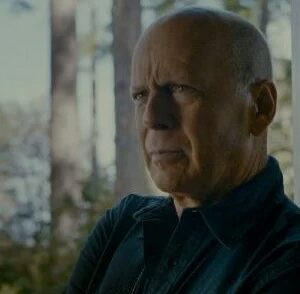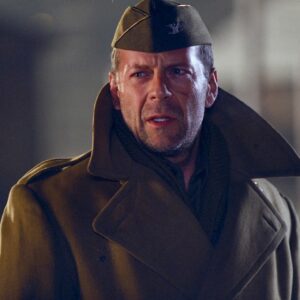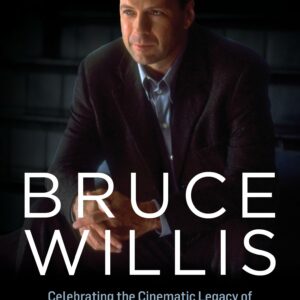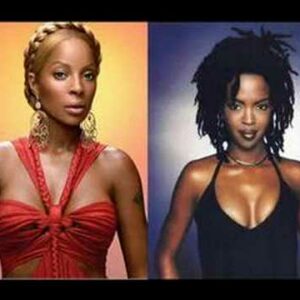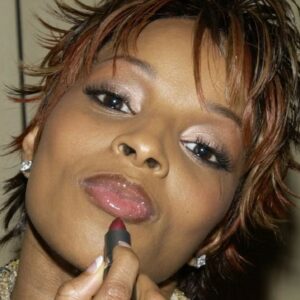Ryan Gosling, one of Hollywood’s most magnetic actors, first captured audiences’ attention with his captivating roles in films like The Notebook and Half Nelson, the latter earning him an Academy Award nomination. Known for his quiet intensity, brooding charm, and a penchant for portraying complex characters, Gosling’s career has been defined by his versatile acting. From dramas to comedies, musicals to action films, Gosling has traversed various genres, all while maintaining his distinct presence on screen. His collaborations with acclaimed directors like Nicolas Winding Refn (Drive), Damien Chazelle (La La Land), and Derek Cianfrance (Blue Valentine) have only solidified his standing as an actor with depth and range.
However, as with many of his contemporaries, Gosling’s career began to move beyond just acting. The evolution from performer to filmmaker is not uncommon in Hollywood, where actors often feel the pull to step behind the camera and tell stories in their own voice. For Gosling, that moment came in 2014 with Lost River, his first foray into directing. The move was both anticipated and surprising; those familiar with his eclectic choice of roles could sense Gosling had a unique vision, but the leap into the director’s chair added another intriguing layer to his already storied career.
First Directorial Work: Lost River and Its Reception
Lost River debuted at the 2014 Cannes Film Festival to a mixed reception, with critics either praising or deriding it in equal measure. For Gosling, this directorial debut was a personal project, one that he wrote, directed, and poured his heart into. Set in a surreal, decaying Detroit, the film follows a single mother and her son as they grapple with the economic and social hardships of their collapsing environment. It’s a haunting fairy tale, laced with strange beauty and dark overtones.
Visually arresting, Lost River drew immediate comparisons to David Lynch and Nicolas Winding Refn, two directors whose works often teeter between the sublime and the grotesque. Gosling’s knack for atmospheric tension and eerie imagery came through in the film, but it was the storytelling that became the subject of debate. While some appreciated its bold, dreamlike quality, others found it disjointed and lacking coherence.
The critical split reflected the challenges that come with any debut, particularly one so deeply stylized. Gosling’s ability to create a visually immersive experience was undeniable, but the narrative was less concrete, leaving many viewers uncertain of the film’s intentions. Yet, in this debut, Gosling had managed to establish one thing clearly: he was not interested in following conventional Hollywood formulas. This was the work of an artist experimenting, pushing boundaries, and taking risks, even if the end result didn’t land with universal acclaim.
Gosling’s Directorial Style: Themes, Influences, and Aesthetic
From the moment Lost River flickered onto the screen, it became apparent that Gosling’s directorial style was unique and heavily influenced by certain cinematic masters. His artistic vision leaned toward the surreal and symbolic, prioritizing mood and tone over traditional narrative structures. In Lost River, Gosling showed a clear love for visual storytelling, creating rich and textured frames that told stories beyond dialogue. The film’s use of dilapidated urban settings and saturated color palettes conjured a nightmarish version of reality, where fantasy and horror intertwined.
It’s impossible to discuss Gosling’s work without acknowledging the directors who have shaped his style. Nicolas Winding Refn, with whom Gosling collaborated on Drive and Only God Forgives, looms large in Lost River’s DNA. Like Refn, Gosling favors long, meditative shots, minimalist dialogue, and striking visual metaphors. Refn’s influence can also be seen in Gosling’s willingness to embrace violence as an artistic tool, not just for shock but for deeper thematic resonance.
Another clear influence is David Lynch, whose work in surrealism has paved the way for many modern filmmakers. Lynch’s ability to blend the bizarre with the mundane, creating worlds that are simultaneously dreamlike and terrifying, is echoed in Gosling’s aesthetic choices. In Lost River, this manifests through the eerie, almost otherworldly depiction of Detroit’s crumbling infrastructure, transforming a familiar American city into something resembling a dystopian dreamscape.
Beyond his influences, Gosling’s thematic preoccupations also set him apart. Lost River is ultimately about survival—both personal and communal—within a decaying, unforgiving world. It reflects on how people endure, how they grasp at remnants of beauty in the face of destruction, a theme that resonates with many of his acting roles as well. There’s also a deep melancholy that permeates Gosling’s work, a sadness that speaks to the fragility of human existence. This sense of emotional fragility, tied with an overarching visual ambition, defines his emerging directorial style.
Challenges Faced in Transitioning from Actor to Director
Transitioning from actor to director is no easy feat. For Gosling, the journey came with its fair share of challenges. While he had the advantage of having worked with some of the most respected filmmakers of his generation, understanding the mechanics of direction is an entirely different discipline. As an actor, Gosling had developed an intuitive understanding of performance, but directing required him to master technical aspects like camera movement, pacing, and editing—skills he had to cultivate quickly.
Moreover, Lost River represented a deep personal risk. When actors step into the role of director, they often face heightened scrutiny, especially when their choices deviate from mainstream expectations. Gosling, known for his charm and good looks on-screen, ventured into the realm of the abstract and unsettling with his first film, defying the safe or commercial route that might have been expected. This boldness in choice, while admirable, left him open to criticism from those who felt the film was too experimental or self-indulgent.
Another challenge Gosling faced was balancing his desire to create a deeply personal project with the practical realities of filmmaking. Directing is not just about artistic vision—it’s about collaboration, managing a team, and making decisions that impact the overall production. For someone used to being in front of the camera, adapting to the demands of being behind it likely required Gosling to relinquish certain comforts and step into a role that demanded more leadership and foresight.
Impact and Contributions: How His Acting Experience Shaped His Directing
Gosling’s extensive career as an actor has undoubtedly influenced his approach to directing. Having spent years embodying characters under the guidance of top-tier directors, he brings a deep understanding of performance to his work behind the camera. In Lost River, this is evident in the nuanced performances he coaxes from his actors, including Christina Hendricks and Ben Mendelsohn. Gosling’s background allows him to communicate effectively with actors, likely fostering an environment where subtlety and emotional depth can flourish.
Additionally, Gosling’s experiences in front of the camera have given him a keen eye for visual storytelling. He understands the importance of framing, timing, and the interplay between actor and environment. Many of his most memorable performances are defined by their silence, by what is left unsaid, and this same restraint can be seen in his directorial work. He knows how to use space, light, and silence to convey meaning, allowing the audience to interpret the emotions and themes at their own pace.
What sets Gosling apart in the industry is his willingness to embrace ambiguity. In a landscape where many filmmakers strive for clarity and resolution, Gosling is unafraid to leave questions unanswered. His films, much like his performances, invite contemplation and introspection, challenging viewers to engage with the material on a deeper level.
Future in Directing: What’s Next for Gosling Behind the Camera?
While Lost River may not have been a box-office hit, it served as a bold introduction to Gosling’s directorial vision. The mixed reception did not deter him, and there’s every reason to believe he will return to the director’s chair in the future. As an artist who has never shied away from challenging roles or unconventional narratives, Gosling’s future as a filmmaker likely holds more experimentation and risk-taking.
The film industry has always been a space where actors-turned-directors carve out niches for themselves, often leading to the creation of iconic works. As Gosling continues to refine his skills behind the camera, we can expect his directorial projects to delve further into the surreal, blending his love for the mysterious and the emotionally resonant. He has the potential to evolve into a director known for creating films that stand apart from the mainstream, drawing audiences into rich, atmospheric worlds filled with emotional and visual complexity.
In the long run, Ryan Gosling’s journey from actor to director mirrors that of many great talents who felt the need to express themselves in new ways. If his first film was any indication, he’s not interested in playing it safe. Instead, Gosling is committed to creating art that provokes thought, stirs emotion, and lingers long after the credits roll. His contributions to cinema, both in front of and behind the camera, will continue to shape his legacy as one of the most versatile and intriguing figures in Hollywood.
